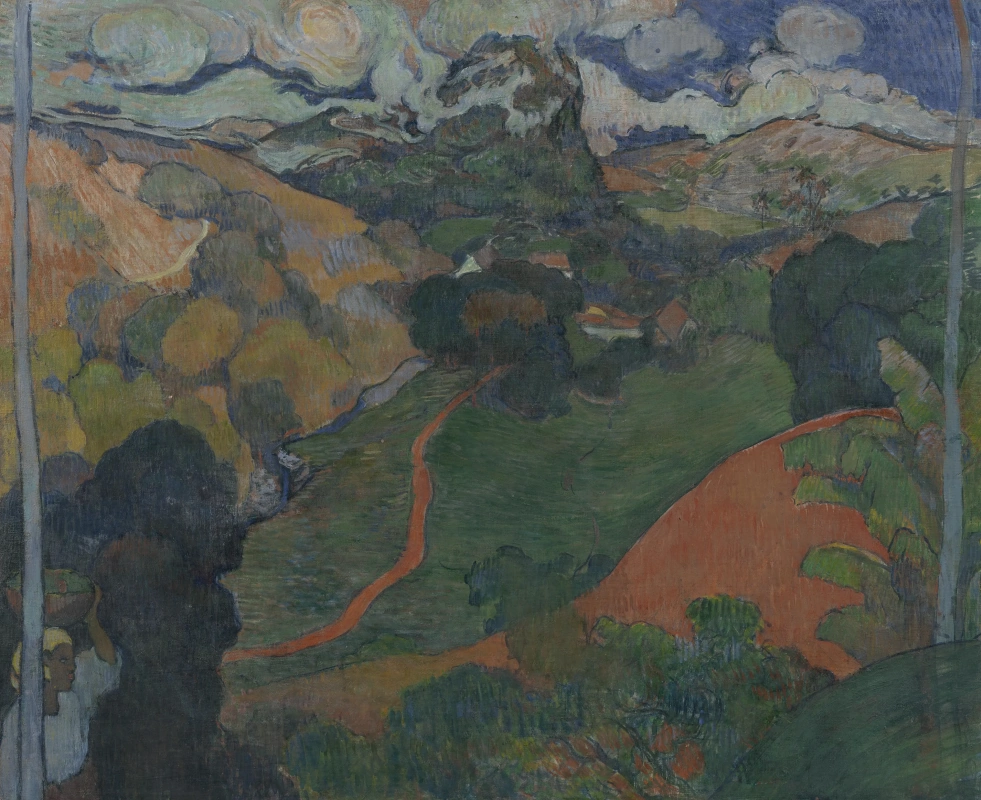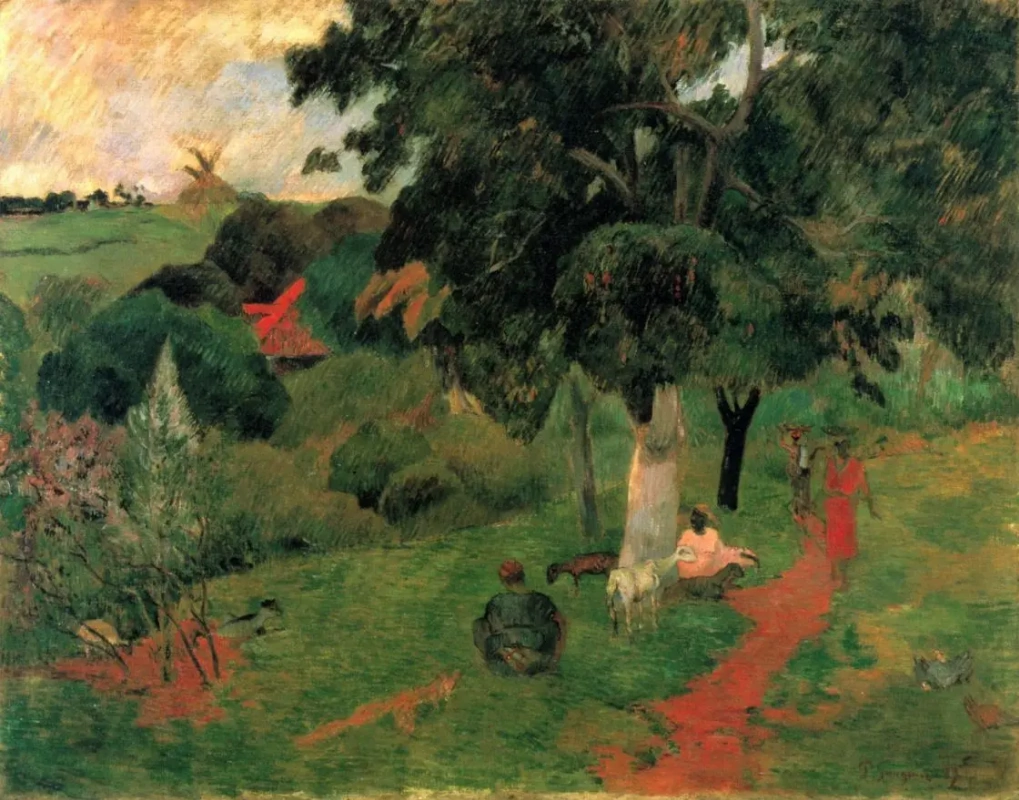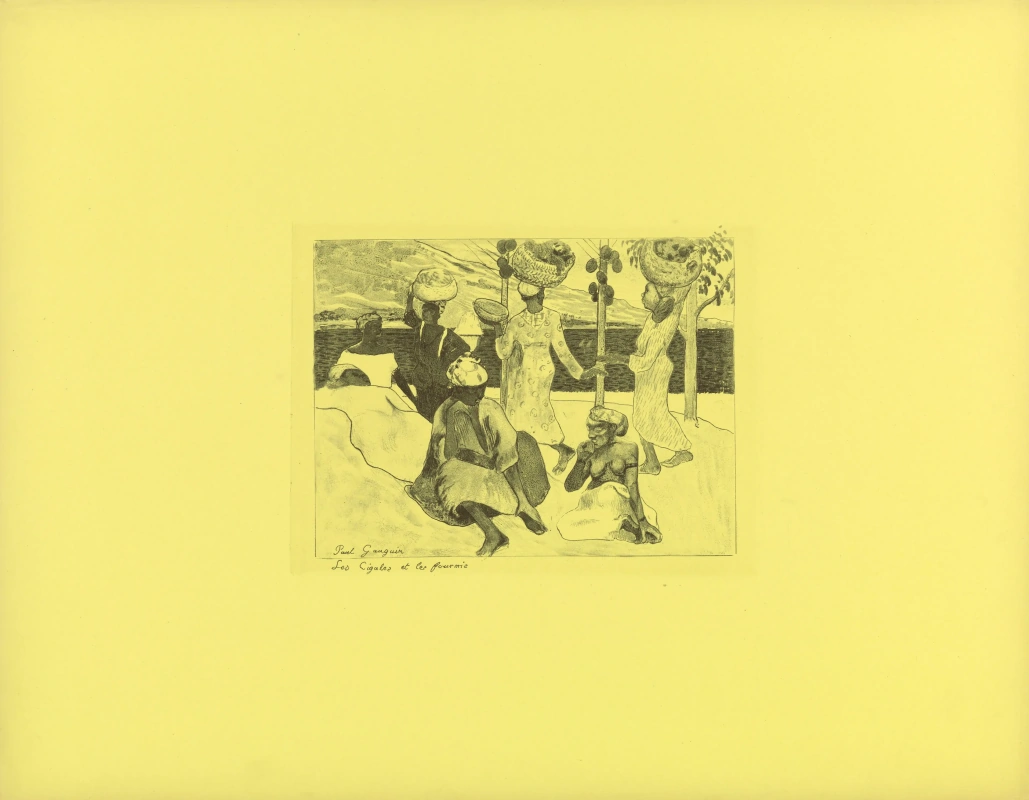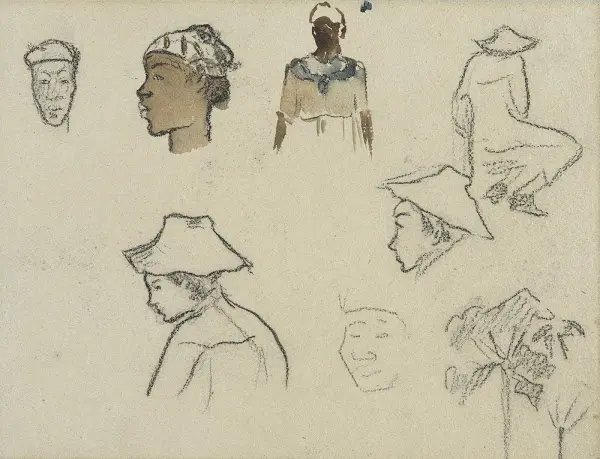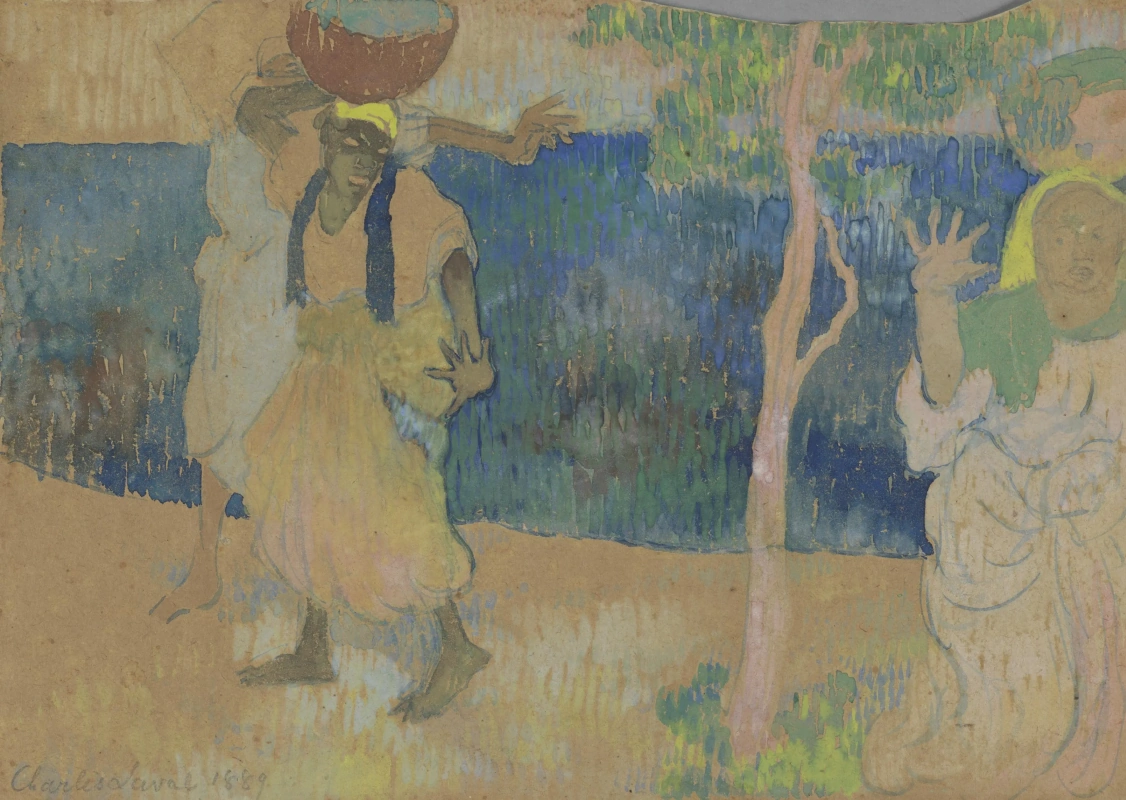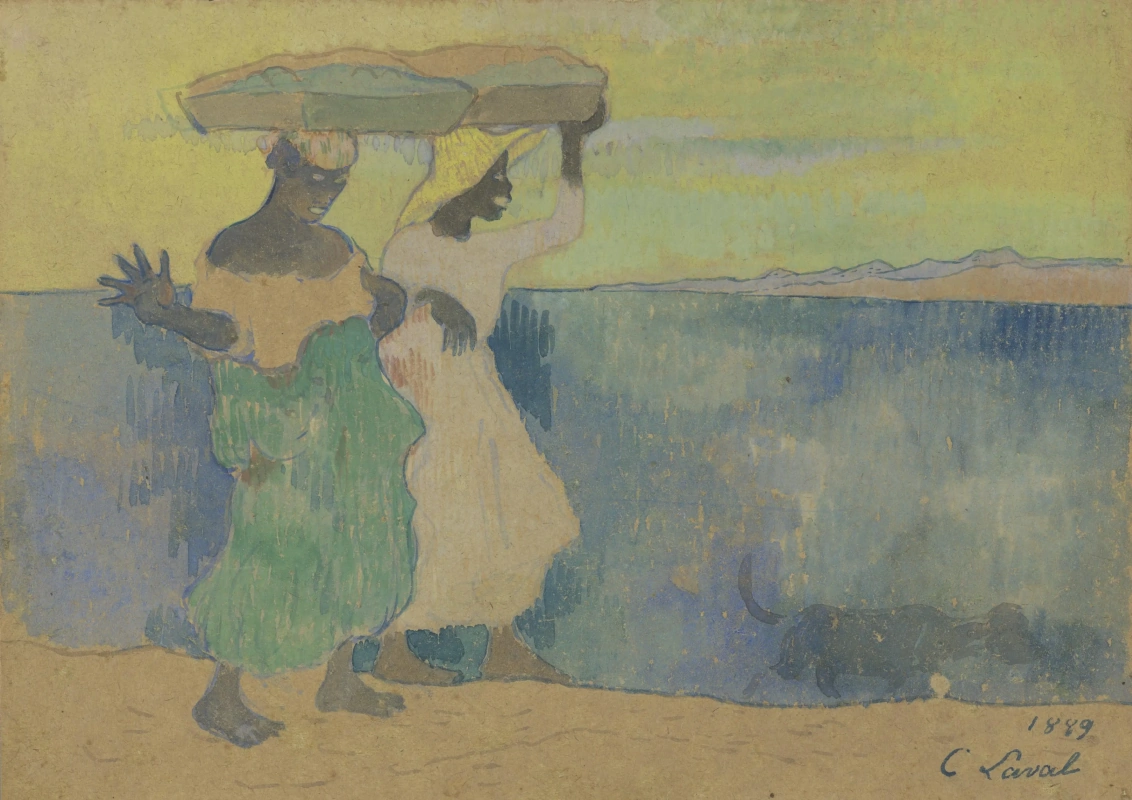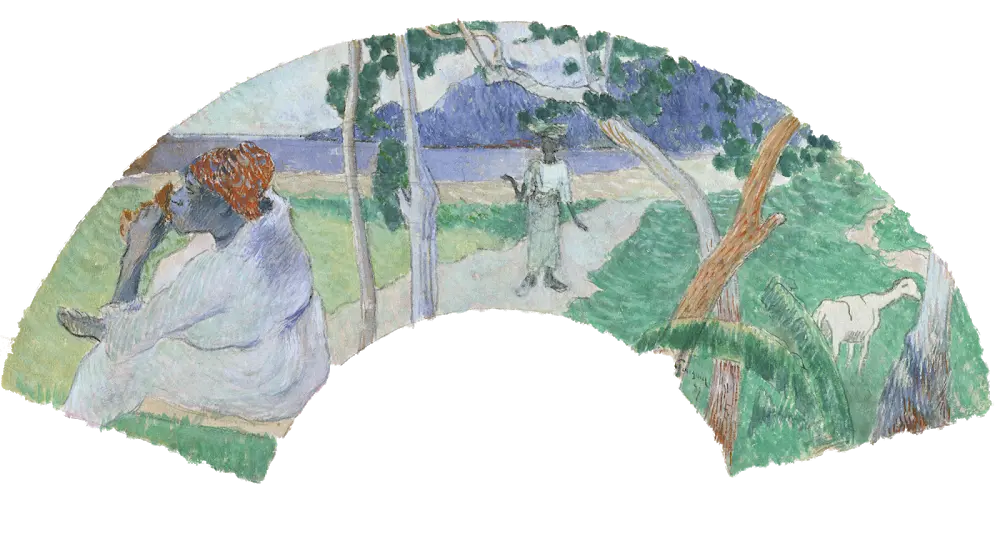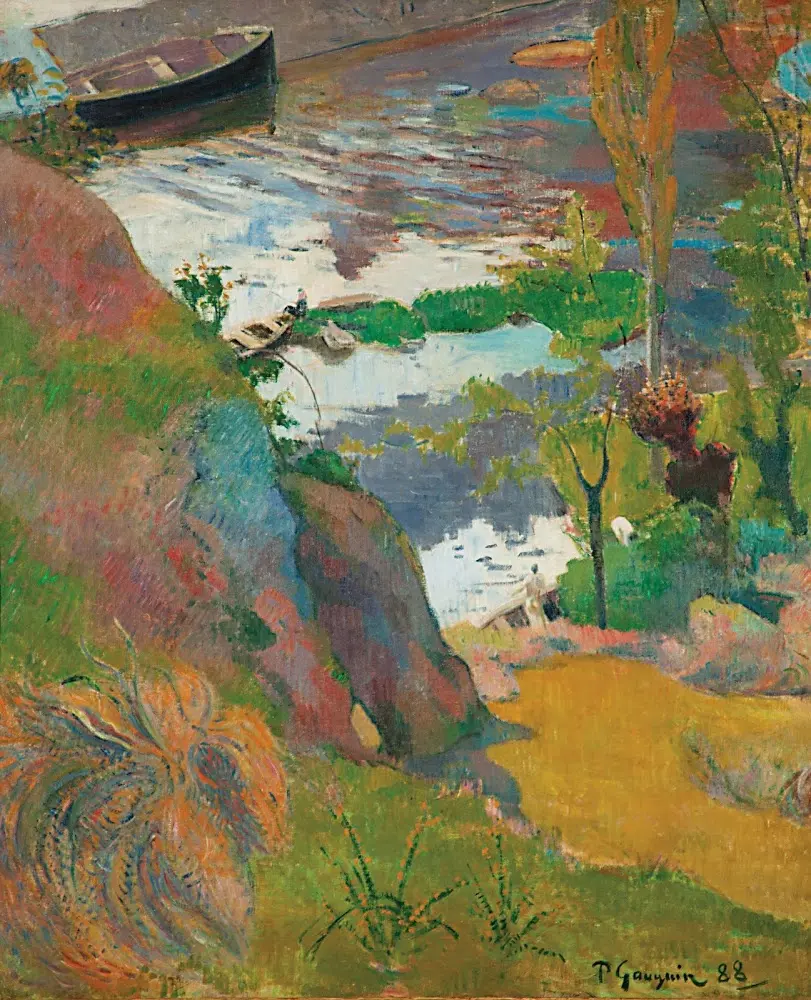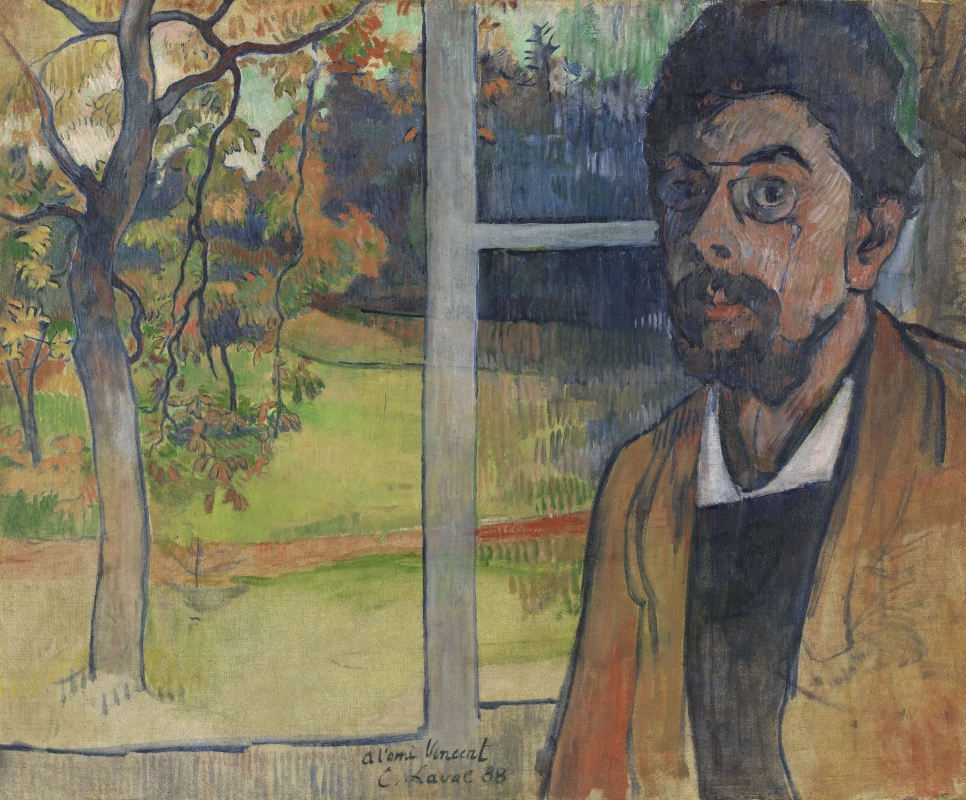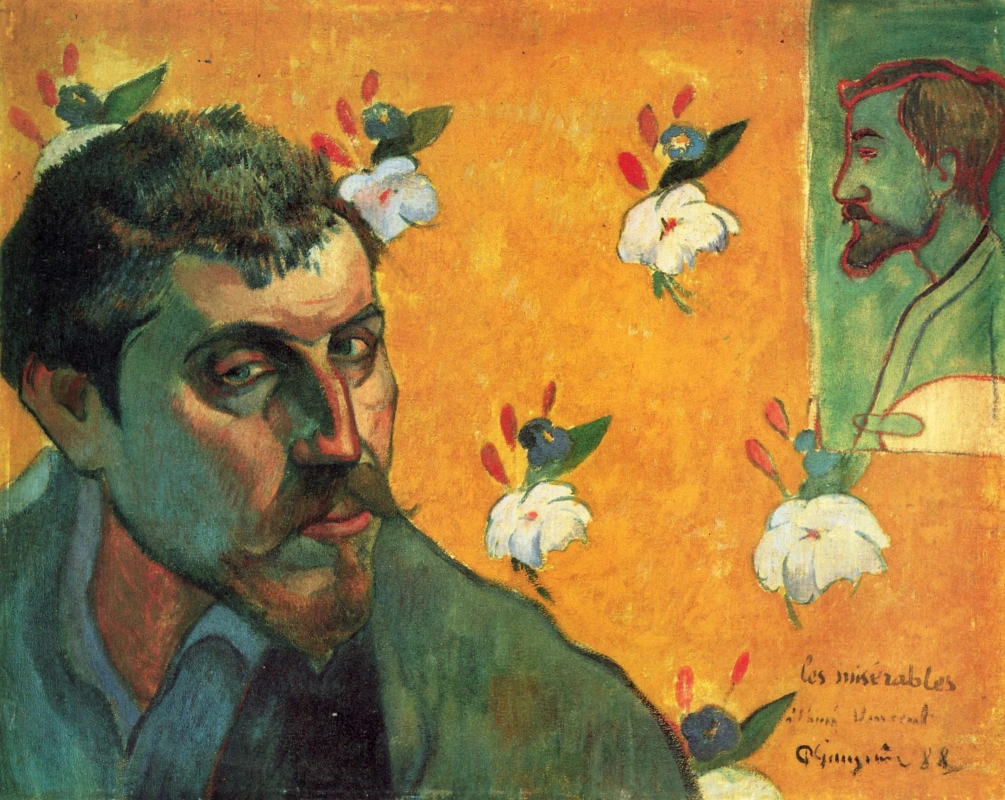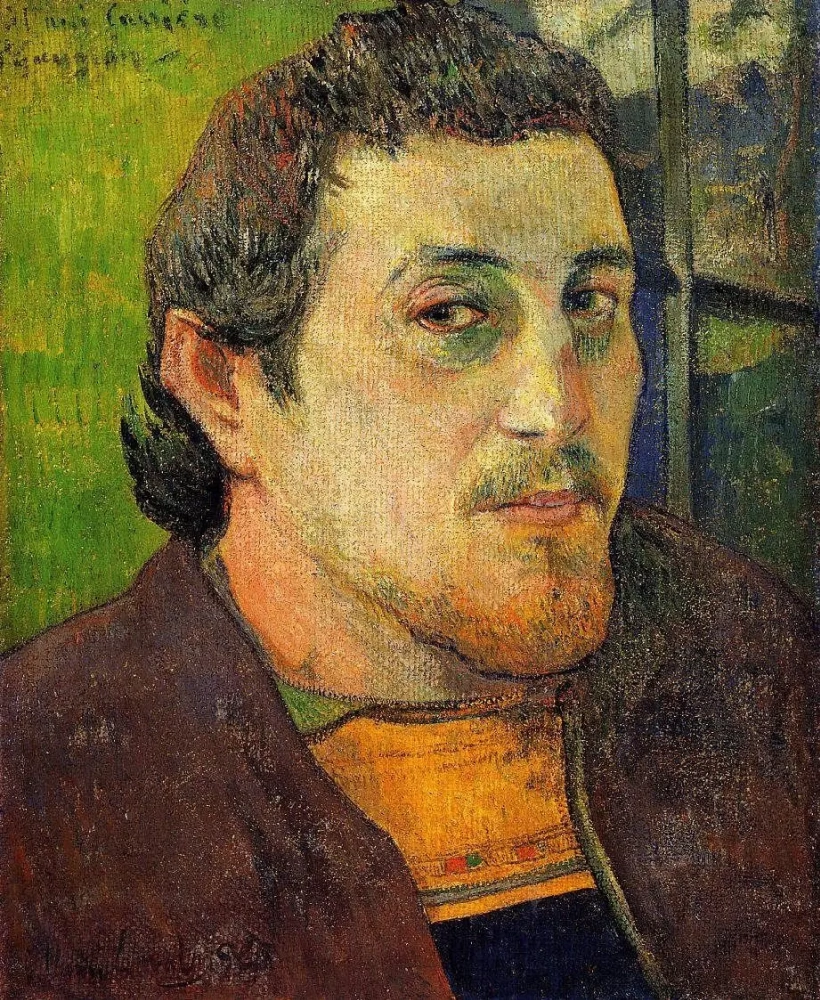From October 5, 2018 to January 13, 2019 the Van Gogh Museum in Amsterdam offers a rare chance to see the colorful works created by Gauguin and Laval during their stay in Martinique, the French Antilles. It is for the first time that nine works by Paul Gauguin and four canvases by Charles Laval, made on the island in 1887, have been united together with numerous sketches, pastels, drawings and watercolors. The setting is not a random one: Vincent van Gogh admired works made by Gauguin on the Caribbean island. They literally enlivened the decadent Parisian art scene with their colorful palette, high-horizon compositions, outlandish nudes and exotic details.

Why Van Gogh Museum?
Van Gogh Museum not only has an exquisite collection of works by Vincent van Gogh but also focuses on his artistic circle. Vincent and his brother Theo first met Paul Gauguin in Paris shortly after the artist returned from his journey to Martinique. They were impressed with Gauguin’s works created on the Caribbean island. The brothers considered them very unusual and modern and admired their marvelous palette, flat decorative planes, and high horizons.Vincent van Gogh wrote to his brother Theo on 27th or 28th of October 1888 from Arles: "What Gauguin has to say about the tropics seems wonderful to me. There, certainly, is the future of a great renaissance
of painting. (…) Not everyone is free and in a position to be able to emigrate. But what things there would be to do! I regret not being ten or twenty years younger; I’d certainly go."
Why Gauguin?
Paul Gauguin (1848−1903) was one of those people who placed art above all, an artist who searched for the unique way of the expression in odds with the mainstream. His bold colors, flat plans, exaggerated body proportions and stark contrasts set him apart from his contemporaries, helping to pave the way for the Primitivism art movement.Like Vincent van Gogh, he was almost self-taught and had started painting comparatively late in life. First, he sailed in the merchant marine , then served in the French Navy, and eventually got a position as a stockbroker. He even happened to make a large family with the Danish woman Mette Sophie Gad. The couple had five children together. Still any of those never could stop him from pursuing his real passion—painting.
Self-portrait with a Mandolin
1889, 61×50 cm
Gauguin lost his job as a stockbroker when the French stock market crashed in 1882. He did not grieve much and saw the firing as a positive development. The artist thought it would allow him to "paint every day." At the time, he spent much time with Impressionists and was included four times in the Impressionist exhibitions. To support his family, he sought employment with art dealers, but it was unsuccessful. He took odd jobs, but they did not give much money, and the family moved to Denmark, seeking the support of Mette’s parents. His wife disapproved of Gauguin’s passion and eventually they have parted. In mid-1885 Paul returned with his eldest son to Paris.
At the final Impressionist exhibition in 1886 he showed 19 paintings and a carved wood relief. However, his works won little attention, for they were overshadowed by Georges Seurat's enormous A Sunday on La Grand Jatte. Frustrated and destitute, he began to make ceramic vessels for sale, and was thinking of moving some other place where life was simpler and frugal. That summer he made a trip to Pont-Aven in the Brittany region of France where he met the painter Charles Laval and they became friends. After a harsh winter there and early spring in Paris, in April 1887, Gauguin and Laval sailed to the warmer climate—first Panama and then French Caribbean island of Martinique, intending to "live like savages."
Just before their leaving, Gauguin painted his friend Laval studying a still life with fruit in the style of Paul Cézanne, who was a great example to him. The ceramic pot in the painting was made by Gauguin himself. A few months after the portrait was painted, the two friends left for Martinique.
At the final Impressionist exhibition in 1886 he showed 19 paintings and a carved wood relief. However, his works won little attention, for they were overshadowed by Georges Seurat's enormous A Sunday on La Grand Jatte. Frustrated and destitute, he began to make ceramic vessels for sale, and was thinking of moving some other place where life was simpler and frugal. That summer he made a trip to Pont-Aven in the Brittany region of France where he met the painter Charles Laval and they became friends. After a harsh winter there and early spring in Paris, in April 1887, Gauguin and Laval sailed to the warmer climate—first Panama and then French Caribbean island of Martinique, intending to "live like savages."
Just before their leaving, Gauguin painted his friend Laval studying a still life with fruit in the style of Paul Cézanne, who was a great example to him. The ceramic pot in the painting was made by Gauguin himself. A few months after the portrait was painted, the two friends left for Martinique.
Still life with profile of Charles Laval
1886, 46×38 cm
Why Martinique?
"The experience I had in Martinique was decisive," Paul Gauguin wrote. "Only there did I feel my true self. If you want to know who I am, you should look for me in the works I brought back rather than those I did in Brittany."Martinique was the very place that has changed Gauguin’s artistic style from Naturalism and Impressionism towards Post-Impressionism , Synthesism and Symbolism . The trip that lasted around six months had an everlasting impact on the artistic development of both artists: Gauguin and Laval. Their style became more energetic, palette got vivid and colorful paints, and their canvases acquired new compositions with vast flat plans and exotic characters. Gauguin’s path to Primitivism, for which he is widely known, has started on Martinique in 1887, not on Tahiti in 1891, as one may think.
Gauguin and Laval admired nature of the Caribbean island. When escaping the Parisian urban life in 1887, decadent at the time in many ways, friends were looking for the lost paradise. They thought that they would find in Martinique naked women and men, sun bathing and eating fruit on the shores of the warm ocean. But they were quite perplexed with what they’ve really found on the island.
Martinique was a French colony at the time. The French had enslaved Africans to work on their sugar cane plantations introduced on the island. Even though slavery was already forbidden officially, many were forced to work for low wages as plantation labourers and carriers. Artists made dozens of sketches, pastels, and watercolors depicting women picking or carrying fruits.
Martinique was a French colony at the time. The French had enslaved Africans to work on their sugar cane plantations introduced on the island. Even though slavery was already forbidden officially, many were forced to work for low wages as plantation labourers and carriers. Artists made dozens of sketches, pastels, and watercolors depicting women picking or carrying fruits.
Gauguin and Laval did not see the harsh reality of Martinique. It remained hidden in their art works. They instead followed the European tradition and presented the colony as an exotic idyll, an uncomplicated paradise. We see women dancing and singing as they work, and men, a black and a white rider, galloping along the shore together and gazing at the same girl, a fruit carrier. The artists depicted life in Martinique as one long holiday.
Gauguin wrote to his wife Mette in June 1887: "We are both currently housed in a case à nègres [‘negro hut'] and it is a paradise compared with Panama. Below us lies the sea, edged with coconut palms, above us all kinds of fruit trees, twenty-five minutes from town."
Gauguin wrote to his wife Mette in June 1887: "We are both currently housed in a case à nègres [‘negro hut'] and it is a paradise compared with Panama. Below us lies the sea, edged with coconut palms, above us all kinds of fruit trees, twenty-five minutes from town."
Why friendship between Gauguin, Laval, and Van Gogh did not last?
After Gauguin and Laval returned from Martinique in 1888, they met again in Pont-Aven (Brittany) on the northern coast of France. Searching for what Gauguin called "a reasoned and frank return to the beginning, that is to say, to primitive art," the artists were joined there by young painters, including Émile Bernard and Paul Sérusier who were also seeking new ways of the artistic expression. Gauguin and the artists around him became later known as the Pont-Aven school.
As a mentor, Gauguin urged artists to rely more upon feeling than upon direct observation preached by Impressionists: "Don't copy too much after nature. Art is an abstraction: extract from nature while dreaming before it and concentrate more on creating than on the final result." The Pont-Aven school began to be decorative in the overall compositions and harmonies of the paintings.
As a mentor, Gauguin urged artists to rely more upon feeling than upon direct observation preached by Impressionists: "Don't copy too much after nature. Art is an abstraction: extract from nature while dreaming before it and concentrate more on creating than on the final result." The Pont-Aven school began to be decorative in the overall compositions and harmonies of the paintings.
As opposed to the Pont-Aven School in the north of France, Vincent van Gogh dreamed to found the "Studio of the South" in Arles. He hoped that the like-minded painters would gather in his yellow house to create a new, personally expressive art. Van Gogh discussed his plan in his letters with Gauguin, expecting that the artist would come together with Laval and others. Theo van Gogh even promised Gauguin that he, as an art dealer, would represent him, if the artist comes to Arles.
In September 1888, Gauguin suggested that Laval and their friend Émile Bernard go with him to Arles. The three artists corresponded with Van Gogh in letters, sending their sketches and paintings. They exchanged three portraits (see below), like artists do in Japan. Gauguin gave Vincent his self-portrait with Bernard’s portrait in the background. Van Gogh sent the portrait of himself as a Japanese monk. And Laval sent his self-portrait near the open window, which Vincent considered "very self-assured, very distinguished."
In September 1888, Gauguin suggested that Laval and their friend Émile Bernard go with him to Arles. The three artists corresponded with Van Gogh in letters, sending their sketches and paintings. They exchanged three portraits (see below), like artists do in Japan. Gauguin gave Vincent his self-portrait with Bernard’s portrait in the background. Van Gogh sent the portrait of himself as a Japanese monk. And Laval sent his self-portrait near the open window, which Vincent considered "very self-assured, very distinguished."
Contrary to Vincent’s expectations, Gauguin was the only one who has arrived to Arles late in October, 1888. Paul planned to remain with Vincent through the spring but their time together ended in less than two months. Relationship between the artists was very tumultuous. They were often engaged in heated debates over the art’s purpose. Although their time together was very productive, it ended abruptly after van Gogh attempted to attack Gauguin with a razor during an argument. Van Gogh reportedly mutilated his own left ear after the blazing row.
Although this version of the story has been accepted for more than 100 years, Encyclopedia Britannica claims that art historians Hans Kaufmann and Rita Wildegans examined contemporary police records and the artists' correspondence and determined that it was actually Gauguin who mutilated van Gogh’s ear and that he used a sword, not a razor. They also concluded that Van Gogh had agreed to give the self-mutilation version of the story to protect Gauguin.
Although this version of the story has been accepted for more than 100 years, Encyclopedia Britannica claims that art historians Hans Kaufmann and Rita Wildegans examined contemporary police records and the artists' correspondence and determined that it was actually Gauguin who mutilated van Gogh’s ear and that he used a sword, not a razor. They also concluded that Van Gogh had agreed to give the self-mutilation version of the story to protect Gauguin.
Self-portrait with bandaged ear
January 1889, 60.5×50 cm
As to Gauguin’s friendship with Laval, it also came to an end soon. Gauguin and Laval fell in love with the same woman in 1890. She was Emile Bernard’s sister Madeleine, and Laval became engaged to her. This brought their friendship to an end, and Laval returned the self-portrait of Gauguin back to the artist, once given by him as a gift. The landscape
seen through the window in the background looks like Martinique, a reference to the time they spent together on the idyllic island.
Why Studio of the Tropics?
In Arles, Vincent van Gogh admitted that his dreamed Studio of the South was only a transit point between the North and the Tropics. He wrote to his brother Theo: "…the little yellow house here in Arles will remain what it is, a halfway house between Africa and the tropics and the people of the north."Gauguin did not share Vincent’s hopes for the Studio of the South. He looked much further and dreamed to return to exotic places. Vincent therefore came up with the idea of a ‘Studio of the Tropics'. But it was actually implemented by Gauguin himself after Vincent’s and Theo’s deaths in 1890 and 1891 correspondingly. As there was nobody left to represent Gauguin’s works in France, the artist left alone for Tahiti in search for the lost paradise once again.
The exhibition Gauguin & Laval in Martinique is on view 5 October 2018 — 13 January 2019 at the Van Gogh Museum, Amsterdam.
Written on materials of The Van Gogh Museum, The Telegraph, Encyclopedia Britannica and other sources. Title illustration: Paul Gauguin, The Mango Trees, Martinique, 1887. Oil on canvas, 86 cm x 116 cm. Credits: Van Gogh Museum, Amsterdam (Vincent van Gogh Foundation).
Художники, упоминаемые в статье








